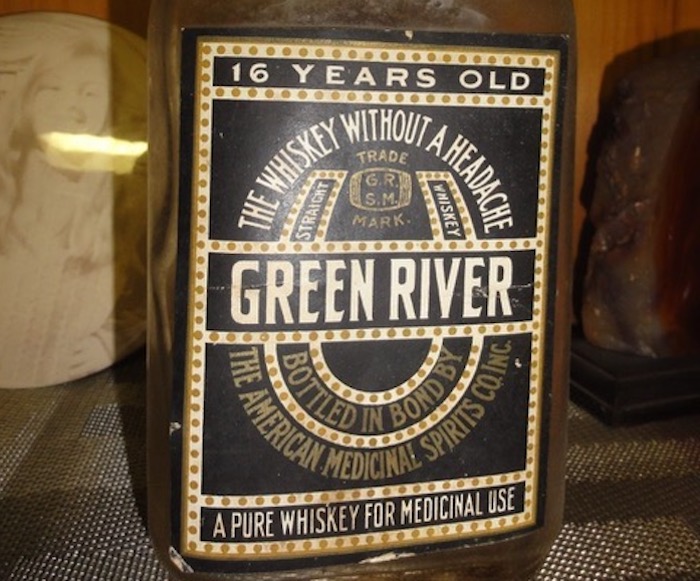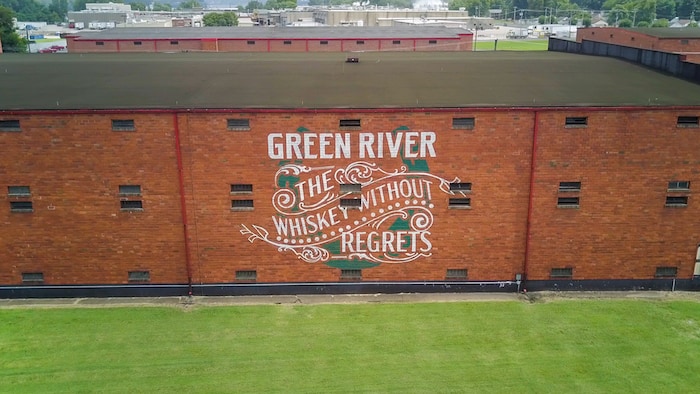When it comes to storied whiskey brands, there’s few more storied than Green River Whiskey – and the story isn’t over yet, as the brand is about to release its next chapter this year after a long history that has seen its namesake change hands in ownership.
In the late 1800s and early 1900s, Green River Whiskey was said to be one of the most well-known whiskey brands thanks to its founder, J.W. McCullough, a former whiskey tax collector-turned-distiller that used his time around other whiskeys and distillers to build a brand that would come to be known around the country, according to his great grandson, John McCulloch.
McCulloch said he first learned about his ancestor at his grandparents’ house, where they would hold Sons and Daughters of Liberty parties and tell stories about his great grandfather.
“They would tell all these stories, and show off the memorabilia from the brand,” he said. The stories included tales of trading with Davy Crockett and Sam Houston, among others. He added to the wealth of knowledge he got from his parents and grandparents by researching archives and on eBay, where a wealth of Green River collectibles – watch fobs, signage, and more – are still widely available.
Green River In Older Times
McCulloch said that his great grandfather built a distillery in Owensboro, Kentucky – then a major producer of Kentucky bourbon – and secured Kentucky DSP-10. From there, he began distilling and created Green River Whiskey, which came with the tag line “The Whiskey Without A Headache.” Once he had his own product ready, McCulloch then began traveling, putting his whiskey in front of as many people as possible. He entered it into competitions – where it won numerous accolades – and even used it to make some deals.
“At one time, he sold 20 barrels of it for a share in a gold mine in Colorado,” McCulloch said. “That made it the most expensive whiskey sold,” he added with a laugh.

The distillery, though, experienced turmoil, when in 1918 they were forced to stop making potable whiskey in order to produce higher-proof spirits for the War effort. As if that weren’t bad enough, the rickhouses that contained aging whiskey burnt to the ground that same year. The final nail in the coffin was the introduction of the 18th Amendment in January 1919, ushering in Prohibition and the end of the distillery’s first iteration.
The next few decades would see the Green River Whiskey brand undergo some changes. The trademark was purchased by one company, which was eventually sold to Schenley Industries, which changed the formula into a blended whiskey during World War II. During this time, too, Green River’s iconic slogan was changed to “The Whiskey Without Regrets.” Schenley continued to make the blended whiskey until the 1960s when it was discontinued.
Meanwhile, the facility itself was going through its own changes. The Medley family bought the Owensboro facility and began producing whiskey, which they continued to do until 1993. At that point, production at the distillery stopped and the facility itself fell into disrepair. There were also a few attempts to revive the distillery, the last being when it was bought by Angostura in 2007, only to have the company’s efforts crumble under the financial crash in 2008.
Green River Today
It wasn’t until 2014 that the site would see action again when Green River Spirits Company (at that time still named Terressentia Corporation) purchased the property. This kicked off a 2-year renovation and revitalization under the watchful eye of 3rd generation Master Distiller Jacob Call. At the time, Call had been working in Florida distilling mostly sugar cane products at the time, but wanted to get back to his Kentucky roots. (Call’s father Ron, a 40-year industry veteran with Jim Beam and Florida Caribbean Distillers, served as a consultant).
“When I laid eyes on it, I knew it was going to be a tough job to put this old beast back together,” Call said. “It was one of the most rewarding things I’ve ever done in my career to rebuild this historic distillery.”
When it reopened in 2016, it was christened the OZ Tyler Distillery and they began laying down whiskey for aging. From the time that Green River bought it, though, Green River Spirits CEO Simon Burch, Call, and their team had been working with McCulloch to resurrect the Green River Whiskey Brand and in 2020, the name of the distillery was officially changed to the Green River Distilling Company.

“They’re really talented. I’m really confident in the [Call and Green Rivers Spirits CEO Simon Burch] down in Owensboro,” McCulloch said.
Now that Green River is back home, Call said, the goal is to modernize the historic brand. Taking cues from not only the old memorabilia for design elements but also historic recipes that came from the McCulloch family, they’ve been able to successfully reinvigorate the brand.
The first release from the brand, which comes out later this year, will be a high rye, 4-year Straight Kentucky Bourbon bottled-in-bond bourbon. The fact that it is bottled-in-bond, Call said, is a nod to the whiskey of yore, as is the fact that they source their corn from within around 50 miles of the distillery, buying direct from the farmer. Call added they also have hopes for a rye down the line, as the brand grows.
Green River Whiskey is not the only product being made at the distillery in Owensboro, however. As the fourth-largest independent distiller of bourbon in the world, Call also oversees the production of a variety of other products, including numerous private label spirits produced under the Owensboro Distilling Company name.
“We’re growing rapidly,” Call said. “I was employee number one, now we’re up to around 80.”
The number of employees isn’t the only thing growing, however. Call said that they are building a new warehouse every 90 days to keep up with production. They’ve expanded the facility three times since opening in 2016 and the number of barrels has also exponentially grown — from 18,000 barrels in 2017 to 90,000 in 2019. That number is still growing.
At the end of the day, though, all of the work is beyond worth it to Call.
“There’s a lot of brands that have been brought back to life, but to be able to bring the label back to its original home, it’s wonderful,” Call said.







